#figma design to html code
Explore tagged Tumblr posts
Text
How to Export Figma to HTML Code: Step-by-Step Guide
In the world of web design and development, efficiency is key. One tool that has revolutionized the design process is Figma, a cloud-based design platform that allows teams to collaborate in real-time. However, once the design phase is complete, the next step is to convert those stunning visuals into functional code. This is where knowing how to export Figma to HTML comes into play.
Understanding the Figma to HTML Process
Figma to HTML is the bridge that transforms your design files into a web-ready format. This process involves translating the visual elements, such as images, text, and layouts, into HTML code that browsers can understand and render as a website.
Step 1: Organize Your Figma Design
Before exporting to HTML, it's essential to have a well-organized Figma design. Ensure that all layers are named appropriately, and elements are grouped logically. This will make the conversion process much smoother.
Step 2: Export Assets
Start by exporting any images, icons, or other assets used in your design. Figma provides an easy-to-use export feature that allows you to select and save individual elements as PNGs, SVGs, or other common image formats. Remember to keep track of where you save these files, as you'll need to reference them later.
Step 3: Use a Figma to HTML Converter
There are several tools available online that specialize in converting Figma designs to HTML code. These converters streamline the process, saving time and ensuring accuracy. Simply upload your Figma file, and the converter will generate the corresponding HTML code.
Figma to HTML converters are equipped to handle various design elements, from basic shapes and text to more complex features like gradients and shadows. This ensures that your design is faithfully translated into code.
Step 4: Review and Adjust
Once you have the initial HTML code, it's crucial to review the output. Check for any discrepancies between the design and the generated code. This could include spacing issues, font styles, or any other visual elements that may need adjustment.
Step 5: Add Interactivity with CSS and JavaScript
While the Figma to HTML converter does an excellent job of translating the visual elements, you may need to add interactivity using CSS and JavaScript. This includes animations, transitions, and responsive design elements that enhance the user experience.
Step 6: Test Across Browsers and Devices
Before finalizing your HTML code, it's essential to test it across different browsers and devices to ensure compatibility. This step helps identify any potential issues that may arise when the website is live.
Step 7: Optimize for Performance
Optimizing your HTML code is crucial for ensuring fast load times and a seamless user experience. This involves minimizing unnecessary code, compressing images, and utilizing techniques like lazy loading to prioritize content.
Step 8: Deploy Your Website
With your HTML code ready and optimized, it's time to deploy your website to a hosting platform. Choose a reliable hosting provider that offers the resources and support you need to keep your site running smoothly.
Conclusion
Knowing how to export Figma to HTML opens up a world of possibilities for designers and developers alike. It streamlines the transition from design to code, saving time and ensuring a seamless user experience. By following these steps, you can confidently convert your Figma designs into functional, web-ready HTML code. Embrace the power of Figma to HTML conversion and elevate your web design projects to new heights.
0 notes
Text
Skidaddle skidoodle

Wednesday, 11/22/2023 ❄️
I have now blasted your retinas with an ungodly amount of light, you're welcome. Anyways, this is the latest iteration of my portfolio... still haven't gotten around to actually coding it though. I'm thinking I should probably code my website in WordPress to be safe(r). Knowing me I'd probably unintentionally attract at least one person that will attempt an SQL injection or something. Speaking of which, I got sidetracked and now I'm learning about basic cybersecurity over at TryHackMe.
53 notes
·
View notes
Text
How can I control render blocking in an HTML and React.js application? Render blocking can significantly impact the performance of your HTML and React.js application, slowing down the initial load time and user experience. It occurs when the browser is prevented from rendering the page until certain resources, like scripts or stylesheets, are loaded and executed. To control render blocking, you can employ various techniques and optimizations. Let's explore some of them with code examples.
#libraries#web design#website#reactjs#web development#web developers#html css#ui ux design#tumblr ui#figma#blue archive#responsivedesign#responsive website#javascript#coding#developer#code#software#php script#php programming#phpdevelopment#software development#developers#php#php framework#jquery
17 notes
·
View notes
Text
Made this blog, finally.
I'm not amazing with personal branding yet, and social media as a business tool is something I'm extremely new to. Hopefully being active on here will help.
I've designed and coded this starter site. Designed with Figma and coded in HTML and CSS, and I'm really happy with it. If anyone does see this and has any critiques, advice, or other places for improvement, I would love to hear it.
Looking forward to stuff, and maybe even things.
6 notes
·
View notes
Text

この書き方めちゃくちゃ便利です(Emmet 改) #shorts #コーディング #プログラミング #htmlcss #html #css #javascript #webデザイン #webデザイナー
#コーディング#app#apple#artist#coding#CSS#design#Figma#HTML#illustrator#JavaScript#js#macbook#macbookair#macbookpro#pc#photoshop#programming#SE#visualstudiocode#VScode#webdesign#webデザイナー#Webデザイン#wordpress#xd#アーティスト#アプリ#イラストレーター
0 notes
Text
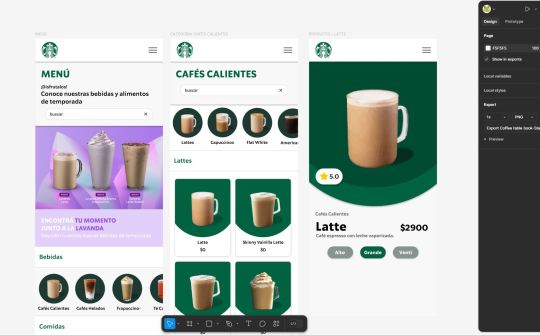
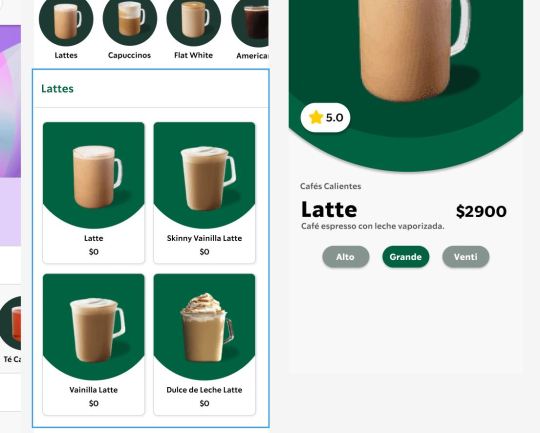
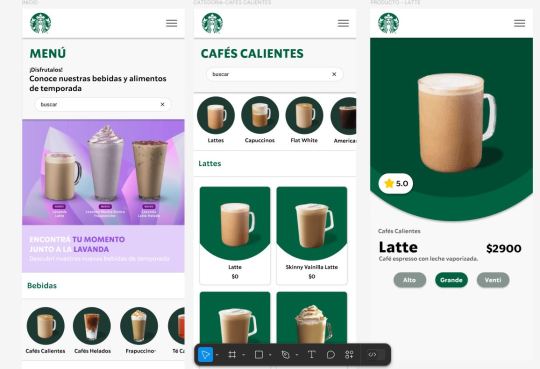
Working on a new project about redesigning how I would create a virtual menu/book table for Starbucks. Starting the prototype in Figma! 🥐☕✨
#web development#web design#web developers#htmlcoding#html css#html#html5#coding#programming#uxdesign#figma#figma to html#freelance#uidesign#figmadesign#visual studio code
1 note
·
View note
Text
Learn how to transform your Figma designs into beautiful and functional websites using this step-by-step guide.
#Figma to HTML Code#Figma to HTML#Figma to HTML Conversion#Convert Figma to HTML#Figma to Code#Figma to HTML Conversion Services#Figma Designs to Websites#Figma to Websites#PSDtoHTMLNinja
0 notes
Text

Hey guys;
Check out my latest hero UI design for any Tour Company! Crafted to captivate and convert, it features stunning visuals, intuitive navigation, and seamless booking. Experience the perfect blend of beauty and functionality, designed to inspire wanderlust and drive bookings.
You might check for more designs. Click on the link...
#uidesign#frontenddeveloper#ui#html5 css3#frontend#css#coding#html css#html5#traveldesign#herodesign#user-centric#user centric design#user behavior#journey#take a tour with friends#figma#figmadesign#figma to html
0 notes
Note
hii!! uh starting writer here, can you pls make a tutorial of how to make the dividers? yours is so pretty!! and i kinda want to do something like that too 🫶
my dividers i use figma! i’m a ux designer so it was easy for me to use 😭
figma is free if you want to try it out but i did download a plugin to export gifs as normally figma doesn’t export .gif
you can use anything that lets you use masks!
for the gradient text dividers i use a html code creator (https://jsfiddle.net/j7vLfbw1/22/)
good luck <3
11 notes
·
View notes
Text
youtube
Final Reflection
Alohaaaa! 🤙 Welcome back to my blog! Alas, this will be my last post on this blog, unfortunately. I have overcome many hurdles, and I am proud of where I am today, my project, and what has led me to this point. This journey was not easy, but it was definitely worthwhile and memorable, thanks to all the support I received. I want to personally thank everyone who has participated in my Instagram polls and my usability testing survey. Shout out to y’all!
1. What were your thoughts about your research topic going into the first week of the semester?
My thoughts during the first week of the semester about my research topic, job displacement in web design, were that AI will not replace human designers or artists as a whole because they lack empathy and the ability to form meaningful connections with humans, both interpersonally and in person. However, I didn't think I could win this battle against AI due to my inexperience. I have the skills, sure, but they are elementary at best. Prior to this project, I had some experience working with Figma and creating my first website prototype through my CM 316 (User Experience) course. I also practiced more coding in HTML and CSS in my ART 320 (Web Design & Development) class. In the end, I created a website prototype, so no coding experience was actually needed.
2. What are your thoughts now about your research topic and your project/practicum?
My current thoughts on my research topic are that AI can be used as a tool to brainstorm during the ideation step of the design process, generating ideas or inspiration for wireframes and similar tasks. However, it should not do the work entirely for you. It's the same with templates; you don't just submit it as is. You have to add your own personal touch and style, and replace the content with your own words. Regarding my project, I never thought I would beat the AI, so it was a pleasant surprise to win against it. I had many ups and downs, and at one point, I thought this project was impossible to complete and that I wouldn't graduate on time. Nevertheless, I'm so glad I reduced its scope, making it less overwhelming and daunting. Best decision I ever made. I somewhat regret not being able to complete my original deliverable of a website, but maybe I can create one in the future. Some things are just not meant for you at the moment, but they can come to you later.
3. What did you learn about yourself as a creative through this journey?
It was challenging for me to meet my own deadlines, so I kept giving myself extensions, as the project was self-directed and mostly independent. I always thought I was behind, and it really made me doubt my abilities and timeliness. However, I learned not to be as harsh on myself, even though we are our own worst critics. I once saw a quote that said, “Make it exist first, then you can make it good,” or something along those lines. That really resonated with the perfectionist in me because I am always so focused on the little details, like spacing and alignment, when I should really be focusing on the broader picture.
4. What did you learn about the creative and production process?
If you don’t already know, the creative process has three phases: pre-production, production, and post-production, also known as the three P’s. What I learned is that you just need to trust the process. There will be some bumps and hiccups along the way, but that is to be expected, as no one is perfect and is bound to make mistakes. You also have to remember that you are still a student, so you're still learning; it’s okay to make mistakes. From planning to execution, every phase of the process is vital, but the bulk of your project will be the production phase. During the production phase, it took me approximately one to three days to work on the lo-fi wireframes and five days to complete the hi-fi wireframes and prototype together. I learned to be patient with myself and the process. Locking in wasn’t easy, but once I was in the zone, nothing could stop me, not even hunger.
5. What advice would you give new senior capstone students?
My advice is to get started as soon as possible and really plan ahead. The pre-capstone is essentially your blueprint for your project, which is necessary for any project. You really need to thoroughly and thoughtfully consider what your project entails, including the specifics for each phase, or at least a general outline. Also, make sure to have backup plans in case your original plan doesn’t work out, like me. My backup plan was to create a website prototype, since I saw other classmates doing the same. Ergo, at least have a plan A and a plan B. The more plans you have, the better prepared you are, and you have more options to choose from. Also, be truly interested and passionate about your research topic. Additionally, I suggest delivering something you’re familiar with, so that you’re not just learning an entirely new skill from the beginning. It’s good to challenge yourself, but the final product may not turn out as you wanted.
6. Where to now?
After graduation, I was referred to work for the local Hawaiian government as a web designer. I still need to follow up with them if the offer still stands. Regardless, I plan to work in-house at a local or remote company, at a local or remote agency, or as a freelance web designer. I dream of working at top companies like Google, Microsoft, or Adobe. If all else fails, I could start up my own web design studio called "Webko," meaning "my web(site)" in Ilokano. I am trying to apply to as many jobs as possible, but I want to focus on graduating first.
Here’s a TL;DR (too long; didn’t read) version:
Initial Beliefs: AI won't fully replace human designers due to a lack of empathy, but I felt that I was inexperienced and wouldn’t win. In the end, I triumphed.
Current View: AI can be a brainstorming tool, but it shouldn't replace the designer's personal touch and creative vision.
Project Experience: Faced challenges but ultimately reduced project scope, which made it more manageable.
Personal Growth: Learned to be less harsh on myself and focus on completing work rather than perfecting details.
Creative Process Insights: Trust the three phases—pre-production, production, and post-production—and be patient with the process.
Advice for New Capstone Students: Start early, create detailed plans, have backup options, and focus on topics that genuinely interest you.
Future Plans: Seeking work as a web designer with hopes of joining major companies or starting a freelance studio called "Webko."
"Don't be sad it's over, be happy it happened." - Dr. Seuss
Again, thank you for following me on this creative journey! I appreciate all of you. Good luck to everyone on their future endeavors! Peace ✌️
#ACMWO#CM491#SeniorCapstoneProject#capstone#senior#project#WestOahu#ACM#AI#ArtificialIntelligence#website#webdesign#webdesigner#UH#CM#CreativeMedia#finalreflection#final#reflection#changedaworldmyfinalmessagegoodbye#Youtube
5 notes
·
View notes
Text
Web Designer vs Web Developer : Quelle carrière choisir ?

Avec l’évolution rapide du numérique, les carrières en conception et développement web restent très demandées. Bien que ces deux professions jouent un rôle clé dans la création de sites modernes, elles impliquent des compétences, des responsabilités et des perspectives différentes. Si vous hésitez entre ces deux parcours, ce guide vous aidera à comprendre les différences en termes de rôles, de potentiel de rémunération et d’opportunités à long terme afin de choisir la carrière qui vous convient le mieux.
Que fait un Web Designer ?

Responsabilités principales
Un web designer se concentre sur l’apparence, l’ergonomie et l’expérience utilisateur (UX) d’un site web. Ses tâches incluent :
• Créer des mises en page visuellement attrayantes et des wireframes.
• Sélectionner la typographie, les palettes de couleurs et les éléments de branding.
• Concevoir des sites responsifs et adaptés aux mobiles.
• Utiliser des outils comme Adobe XD, Figma et Sketch.
• Collaborer avec les développeurs pour assurer une bonne transition entre le design et le code.
Compétences clés pour un Web Designer
• Connaissance des principes UI/UX et des meilleures pratiques en ergonomie.
• Maîtrise des logiciels de design graphique (Photoshop, Illustrator, Figma).
• Notions de base en HTML & CSS pour le prototypage.
• Compréhension du branding et de la psychologie des couleurs.
Avantages d’être Web Designer
✔️ Travail très créatif avec une grande liberté artistique.
✔️ Moins de programmation que dans le développement web.
✔️ Forte demande pour l’expertise UI/UX.
✔️ Nombreuses opportunités en freelance, notamment sur des plateformes comme Upwork.
Défis du métier de Web Designer
❌ Rémunération souvent inférieure à celle des développeurs.
❌ Nécessité de suivre en permanence les tendances du design.
❌ Certains clients sous-estiment la valeur du design par rapport au développement.
Que fait un Web Developer ?
Responsabilités principales
Un développeur web est chargé de concevoir et maintenir des sites fonctionnels en utilisant des langages de programmation et des frameworks. Ses missions incluent :
• Écrire et corriger du code pour implémenter des fonctionnalités web.
• Optimiser la vitesse, la sécurité et la scalabilité des sites.
• Gérer les systèmes backend, les bases de données et les API.
• Corriger les bugs et améliorer l’expérience utilisateur.
• Travailler aussi bien sur les technologies front-end que back-end.
Les différents types de développeurs web
• Développeur Front-End : Se concentre sur les aspects visuels et interactifs du site (HTML, CSS, JavaScript).
• Développeur Back-End : Gère la programmation côté serveur, les bases de données et les API.
• Développeur Full-Stack : Maîtrise à la fois le front-end et le back-end.
Compétences clés pour un Web Developer
• Maîtrise de HTML, CSS et JavaScript.
• Connaissance de langages de programmation comme PHP, Python, Ruby.
• Familiarité avec des frameworks comme React, Angular, Vue.js.
• Gestion des bases de données (MySQL, MongoDB).
• Compétences en débogage, tests et gestion de versions.
Avantages d’être Web Developer
✔️ Forte rémunération, en particulier pour les développeurs full-stack et back-end.
✔️ Demande croissante avec de nombreuses opportunités d’évolution.
✔️ Possibilité de travailler sur des projets complexes et de grande envergure.
✔️ Opportunités de travail à distance et en freelance.
Défis du métier de Web Developer
❌ Apprentissage continu indispensable en raison des évolutions technologiques rapides.
❌ Travail très technique avec peu d’aspects créatifs.
❌ Peut impliquer de longues heures de débogage et de résolution de problèmes.
Conclusion
En résumé, si vous aimez la créativité et le design, le métier de web designer pourrait vous convenir. Si vous préférez la programmation et la résolution de problèmes techniques, le développement web est une meilleure option. Quelle que soit votre décision, les deux carrières offrent de nombreuses opportunités dans l’univers du numérique !
Je suis hermane junior Nguessan developpeur web &mobile
Liens linkedIn 👉 : https://www.linkedin.com/in/hermane-junior-nguessan-2a9a05324?utm_source=share&utm_campaign=share_via&utm_content=profile&utm_medium=ios_app
https://www.linkedin.com/in/hermane-junior-nguessan-2a9a05324?utm_source=share&utm_campaign=share_via&utm_content=profile&utm_medium=ios_app

2 notes
·
View notes
Text
My new project, a portfolio!
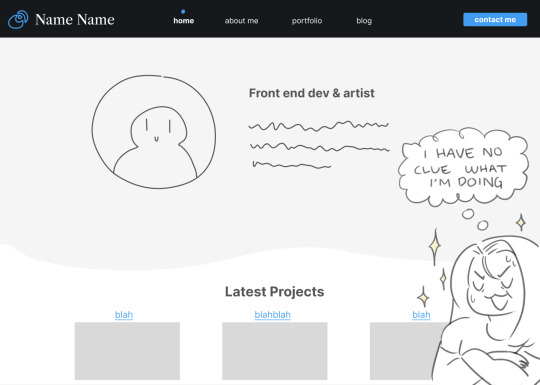
Wednesday, 10/18/2023 ☕
I've finally started working on a portfolio website for myself! Before diving into the code I thought I'd make it easier on myself by making a mock-up in Figma. Turns out Figma is more difficult to get good at than it looks though (●´∀`●)フ I did manage to make something that I'm pretty pleased with in the end (with some placeholders). An update will be coming within the next couple of days! In the meantime, if you have any thoughts on the theme/layout so far feel welcome to leave them below ^-^
19 notes
·
View notes
Text

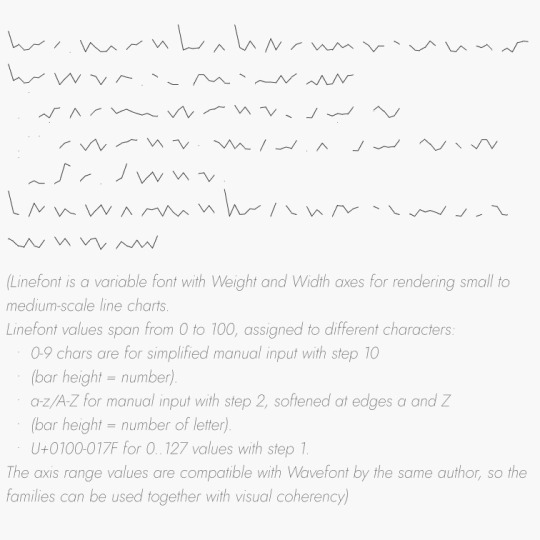

totally awesome sneak peak at my next web typography assignment, everyone go give Dmitry Ivanov a big consensual kiss.
#dmitry ivanov#linefont#typography#web typography#web design#ux/ui#website#coding#digital art#graphic design#lettering#letterforms#figma#html#css
5 notes
·
View notes
Text
Title: Build Your Dream Website: Live Web Designing Course | Prayug
Unleash your creativity and bring your ideas to life with our Live Web Designing Course! In this interactive and immersive program, you'll learn the latest web design techniques, tools, and best practices from experienced instructors. Gain hands-on experience with:
Cutting-edge design tools like Adobe XD and Figma
Coding languages HTML, CSS, and JavaScript
Responsive web design and mobile-first strategy
User experience (UX) and user interface (UI) design principles
Building and launching your own website
Join our live online classes, collaborate with peers, and get personalized feedback. Whether you're a beginner or looking to enhance your skills, our course will empower you to create stunning websites that impress. Enroll now and start building your dream website!
2 notes
·
View notes
Text
Incredible High-paying Career Paths for Web Designers
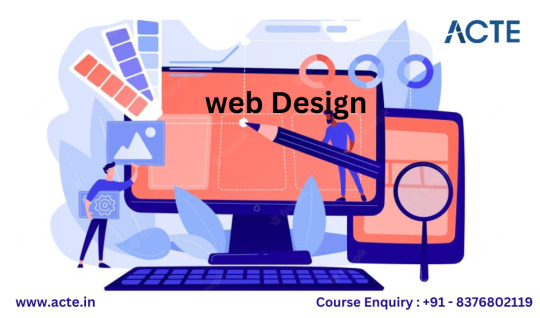
In today's digital age, web design has become an exciting and changing field with many options. There's a big demand for web designers who can make websites that look good and are easy to use. If you recently finished learning web design, great job! You're starting an exciting journey. In this blog post, we'll talk about all the different jobs you can do after learning web design.
Web Designer:
Make websites that look good and are easy to use.
Work with clients to understand what they want their website to look like.
Design how the website will look, including picking colors and fonts.
Create pictures and graphics to make the website look nice.
Use computer programs like Adobe Photoshop, Sketch, or Figma to design things.
Learn about the latest design trends to make modern and good-looking websites.
Front-End Developer:
Turn web design ideas into working websites using code like HTML, CSS, and JavaScript.
Make sure websites work well on different devices and screens.
Add fun things like buttons that change when you click them.
Work with web designers to make their ideas real.
Find and fix problems with how websites look and work.
Keep up-to-date with new tools and ways to build websites.
UI/UX Designer:
Focus on making websites and apps that are easy for people to understand and use.
Talk to users and test websites to learn how to make them better.
Draw pictures and models of websites before they're built to see how they'll work.
Work closely with people who make websites to make sure they look like the designs.
Think about who will use the website and how they will use it.
Try to make sure websites are easy to use and look nice for everyone.

Graphic Designer:
Make pictures and designs for things like logos, posters, and ads.
Use computer programs like Adobe Illustrator and InDesign to create pictures.
Work with marketing teams to show what a brand wants to say with pictures.
Understand things like colors, fonts, and how things should look on a page.
Keep a collection of your best design work to show to others.
Change designs to look good both on computers and when they're printed.
E-commerce Specialist:
Make and make better websites where people can buy things online.
Make sure it's easy for people to find and buy things on the website.
Make sure it's safe for people to pay for things online.
Use tools like Shopify, WooCommerce, or Magento to help make online stores.
Look at how people use the website to sell more things.
Keep up with what's new in online shopping.
Digital Marketer:
Make things like pictures and ads that look good and get people's attention online.
Make things for social media, emails, and online ads.
Work with other people in marketing to make sure the pictures match what they want to say.
Use tools to see how the things you make do online and make choices based on what you learn.
Make sure the pictures look good on different places online and on phones and computers.
Learn about new ways to do marketing online.
CMS Specialist:
Change and keep up websites that use special programs, like WordPress or Joomla.
Change how websites look and work to match what the owner wants.
Make sure websites are safe and work well.
Teach people how to use the special program to make websites.
Fix problems with the special program.
Learn about the updates and extras for the special program.
Freelancer:
Work for yourself and make websites for people.
Choose when you work and how much you charge.
Make a lot of different kinds of websites for different people.
Tell people about your work online and meet other people in the same job.
Do everything for your work, like talking to people, making websites, and getting paid.
Keep getting better at your work and get more people to hire you.
Web Design Educator/Trainer:
Teach other people how to make websites.
Make plans and materials to help people learn how to design.
Teach classes and workshops, or teach people on the internet.
Help people learn and give them feedback.
Keep up with new ways to teach and new things in web design.
Encourage and help new designers learn.
Entrepreneur:
Start your own company that makes websites.
Build a team of people who design, build, and manage websites.
Talk to people who want websites and make a plan for how to make them.
Make a brand and a way to tell people about your company.
Do different kinds of websites for big and small companies.
Try to be creative and make the best websites.
User Testing and Research:
Be an expert in seeing if websites are easy to use.
Ask people and look at how they use websites to see if they're good or need to be better.
Make reports and ideas for making websites easier to use.
Work with designers and builders to make websites better.
Tell people why it's important to make websites that anyone can use.
Teach people how to make websites that work for everyone.
Mobile App Designer:
Design how apps on phones and tablets look and work.
Make sure app designs work well when you touch the screen.
Work with people who make apps to make sure the designs work.
Keep up with how to design apps for different kinds of phones.
Think about how people use apps and make them easy to use.
Test and change app designs based on what people say.
Art Director:
Be the boss of art and design projects and tell the team what to do.
Watch over how ads, campaigns, or design projects look.
Lead a team of designers and give them advice.
Talk to people who want art and design work to understand what they want.
Make sure designs match what a brand is saying and how it looks.
Keep high standards for how designs look and how creative they are.
Web Accessibility Specialist:
Be an expert in making websites work for people with disabilities.
Follow rules for making websites easy to use for everyone, like WCAG.
Check if websites are easy to use for people with disabilities.
Suggest changes to make websites better for everyone.
Work with designers and builders to make websites more accessible.
Tell people why it's important to make websites that everyone can use.
Finishing web design is like getting a key to many opportunities. You can make great websites, make things look good, and create your own path online.
But here's the trick: It's not just about making things look nice. It's about making things work and making them helpful. As a web designer, you're a digital magician who combines art and usefulness.
So, as you start in this field, remember that you're not just a web designer; you're a digital creator. Embrace challenges, stay curious, and keep being creative. Your canvas is the internet, and your tools are your skills. Paint your digital future and make it fantastic. If you want to start your web design journey, I recommend ACTE Institution because they offer training, job placement, and certification. Have a great day!
11 notes
·
View notes
Text
Top Frontend Development Tools to Use in 2023
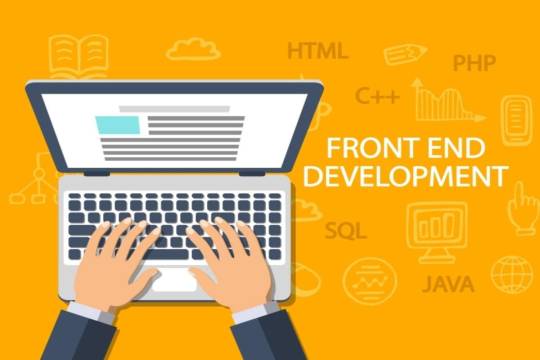
Front-End Web Development is a rapidly evolving field, with new tools and technologies constantly emerging. As we step into the year 2023, front-end developers are facing new challenges and opportunities in crafting engaging and responsive user interfaces. To stay ahead in this dynamic landscape, it's crucial to arm yourself with the right Frontend Development Tool.
In this blog, we will explore the top front-end development tools that are expected to dominate the industry in 2023. From code editors and frameworks to design tools and performance optimization, these tools will help you streamline your workflow, enhance productivity, and create cutting-edge web applications that meet the demands of modern users. Let's dive into the exciting world of front-end development and discover the must-have tools for 2023!
Top Frontend Development Tools to Use in 2023:
ReactJS:
ReactJS is a popular JavaScript library used by any Frontend Development Company for building user interfaces. With its component-based architecture, React allows developers to create reusable UI components that can be easily combined to build complex web applications.
React's virtual DOM (Document Object Model) enables efficient rendering, making it highly performant for creating interactive and dynamic user interfaces. React also has a large ecosystem of supporting tools, libraries, and community resources, making it a top choice for front-end development in 2023.
Vue.js:
Vue.js is another powerful JavaScript framework for building user interfaces. Known for its simplicity and ease of integration, Vue.js offers a flexible and scalable approach to front-end development. Vue.js follows a component-based architecture similar to React, making it highly modular and easy to understand.
Vue.js also offers features like two-way data binding, computed properties, and a comprehensive template syntax that simplifies the development process. With its growing popularity and extensive documentation, Vue.js is expected to gain more traction with any Web Development Company in 2023.
Figma:
Figma is a popular design tool that has gained significant popularity in recent years. It offers a collaborative and cloud-based approach to design, allowing front-end developers to work seamlessly with designers.
Figma offers powerful design and prototyping features, such as vector editing, component libraries, and real-time collaboration, making it a go-to tool for designing modern and responsive user interfaces. Figma also offers integrations with other design and development tools, making it a versatile choice for front-end developers in 2023.
Visual Studio Code:
Visual Studio Code (VSCode) is a widely used code editor that has become a staple in the front-end development community. With its extensive plugin ecosystem, powerful debugging capabilities, and rich set of features, VSCode provides an efficient and productive environment for writing front-end code.
VSCode offers support for a wide range of programming languages, including JavaScript, HTML, CSS, and popular front-end frameworks, making it a top choice for front-end developers in 2023.
Performance Optimization Tools:
As web applications become more complex, optimizing performance has become a crucial aspect of front-end development. Tools like Lighthouse, Webpage Test, and Google Page Speed Insights help developers analyze and optimize the performance of their web applications.
These tools offer insights and recommendations for improving areas like load times, caching, image optimization, and accessibility, helping developers create blazing-fast and user-friendly web applications in 2023.
jQuery:
jQuery is a widely used JavaScript library that has been a popular front-end development tool for many years. It provides a simplified way to interact with HTML documents, manipulate DOM elements, handle events, and make AJAX requests. jQuery offers a concise syntax and cross-browser compatibility, making it easy for developers to write efficient and interactive front-end code.
One of the key advantages of using jQuery is its simplicity and ease of use. It provides a concise and intuitive syntax that allows developers to perform common tasks, such as traversing the DOM, manipulating elements, and handling events, with just a few lines of code. This can significantly reduce the amount of code needed and simplify the development process.
Git and Version Control Tools:
Version control is an essential aspect of modern front-end development, allowing developers to collaborate, track changes, and revert to previous versions of their code.
Git, along with platforms like GitHub and GitLab, offers powerful version control capabilities, making it easy to manage the codebase, collaborate with teammates, and deploy changes to production. These tools are expected to continue to be a critical part of front-end development workflows in 2023.
CSS Pre-processors:
CSS pre-processors like Sass, Less, and Stylus have become popular tools for writing efficient and maintainable CSS code. These pre-processors offer features like variables, mixins, and nested selectors, making it easier to manage and organize CSS code for large web applications.
Conclusion:
The top front-end development tools for 2023 are expected to provide developers with powerful features that enhance their productivity, streamline their workflow, and enable them to create modern, responsive, and high-performing user interfaces.
These tools will be invaluable for Frontend Development Company India and Frontend developers in keeping up with the evolving landscape of web development. If you are looking for a Frontend Development Company in India, then connect with us now.
3 notes
·
View notes